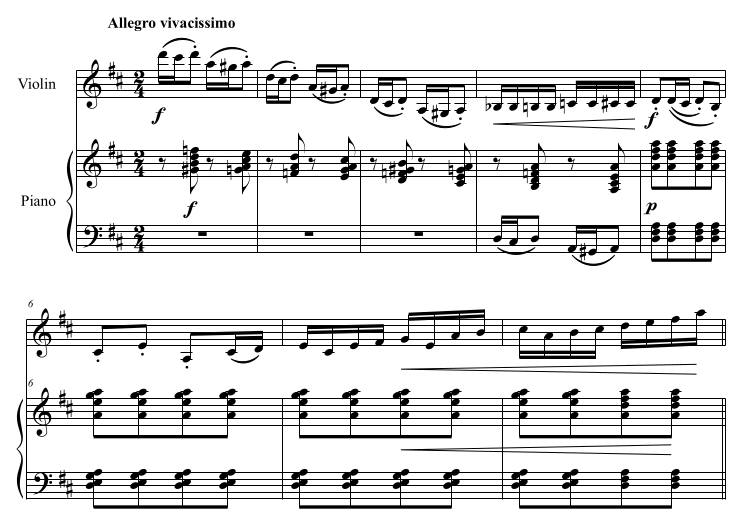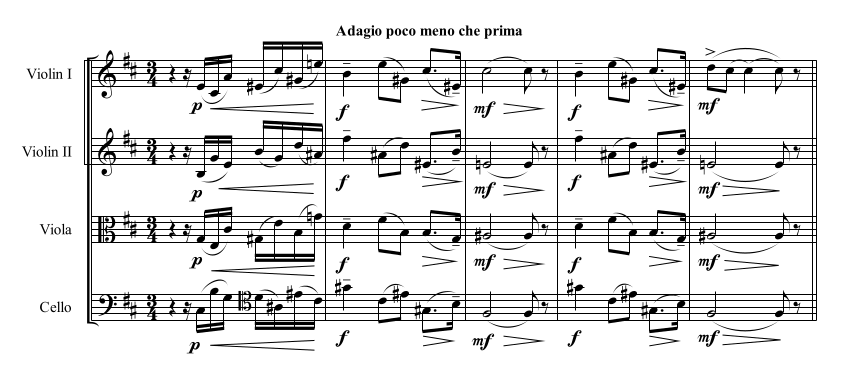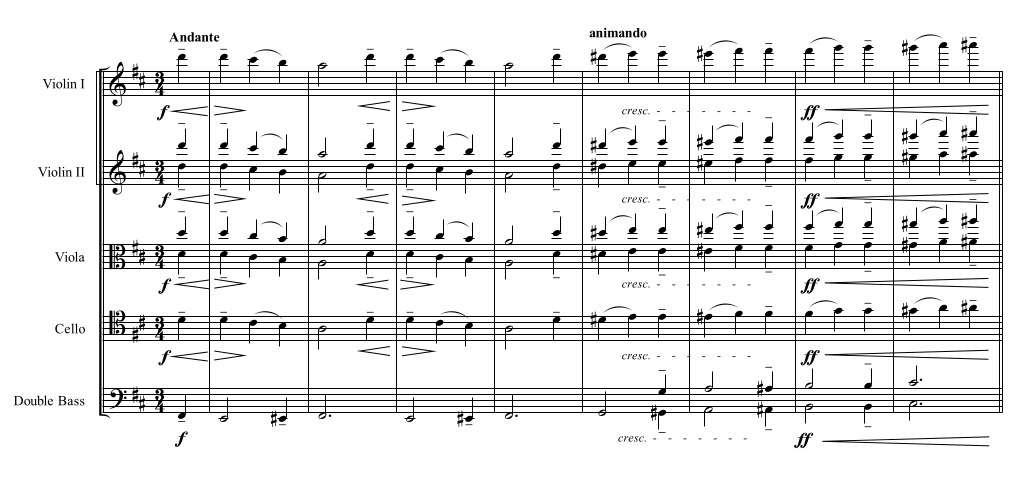The word 'loud'
Many of us learned somewhere along the way that a forte means loud and a piano means quiet. This is the easiest way to explain the dynamics so we settle for that.
Now, let's think about the word 'loud'. When do you use it? Do you use it to describe something in a positive way? "My neighbor is loud.", "The color of this shirt is loud.". When you think of it, often times 'loud' is used rather negatively.
How does it translate when you describe a dynamic marking this way in music? We end up going for the sheer volume of sound and forget about the tone quality when you are just thinking 'loud' to play forte. Moreover, we even distort the quality of sound because of this general negativity the word carries. The worst part of all of this is that we do it subconsciously because "forte = loud" is ingrained in our brain.
Describe 'forte'
It is imperative to preserve a good quality of tone whether we are playing a forte or piano. That means we need to come up with a way to describe or think of forte with other than 'loud'.
Instead of 'loud', you could say, 'full, resonant, powerful, exploding, bright, brilliant, triumphant, intense, dense, decisive, etc.'. Of course some of these words can be used to describe a softer dynamic; for instance, piano can be bright. We should have a basic understanding that forte means something big in dynamics. But then, instead of thinking 'loud', come up with another word that describes the forte depending on the context of the music you are playing.
Give meaning to 'forte'
Now we are staring to give a meaning to that forte once we thought was 'loud'. We are now giving a life to the dynamic marking. When we think of forte as bright or decisive, we are associating the forte with a certain character. Now forte is more than about how big we have to play dynamically. Music becomes alive when we give it a character. When we think about a character in music and dynamics, we think about tone. This makes a big difference in the way we play, and takes us to another level when we interpret music.
Some examples
I talk about a similar topic in Understanding dynamic markings, but let's take a look at some examples here.
The first example is the opening of Beethoven's "Kreutzer Sonata".

The first thing to point out is that this sonata is peculiar in the opening because it starts with just the violin. It is striking when you first hear it. This peculiarity alone could make the first chord that much more special than the opening of any other violin sonata.
It is Adagio sostenuto. Composers always give us musical clues from the tempo markings. It certainly would give a different sort of feel if it were written 'Andante'. We should think about why he chose Adagio sostenuto out of all the choices he had.
It starts with a forte, then it goes to a piano on the 2nd beat after a decrescendo. He is trying to tell us what he heard musically from these dynamic markings. This could have been a fz with no decrescendo. What kind of forte did he hear? It is clear that he did not hear just 'loud' when we consider his tempo marking and careful choice of dynamic markings.
The first chord ends up in a disaster when we are just thinking 'loud'. We need to think about the quality of music, the quality of forte. When we think enough about it, the forte will carry beautiful musical quality along with the volume of sound.
Let's look at another example. This excerpt is from the 3rd movement of Violin Concerto by Tchaikovsky.

Let's think about the character of forte instead of playing it loud. When you can capture an appropriate musical character the volume of the sound will come with it.
There are several clues the composer indicated for us to understand the character of music here. The first is the key and tempo marking. It is D major and Allegro vivacissimo. Next clue is the length of notes. The longest note value in this excerpt is an 8th note. That's pretty short. There are 16th notes and staccato as well. These might be enough clues for you to come up with some sort of character.
Then there are the 8th notes off the beat in the orchestra. And Tchaikovsky is instructing us to play it at a 'big' dynamic. When we think about all these things the forte is no longer loud, but it bears some kind of character beyond the volume of sound.
Here is another example, this is from the last movement of Tchaikovsky's Symphony No.6

Compare it to the next excerpt, also from the same movement.

There are forte in both excerpts but they are different kinds of forte. The first one is in B minor and Adagio, while the second one is in D major and Andante. The dynamics of the first excerpt keep going up and down, while the they are generally going up in the second excerpt. It doesn't show here but the there is much going on in the winds and brass parts in the 2nd excerpt, while it is primarily strings only in the 1st excerpt.
When you look at all these differences, you will feel forte with many sorts of characters. 'Loud' should be the last thing that comes to your mind now.
Associate 'forte' with character and quality
We can look at every forte in this manner. Forte is never 'loud', it is a 'big' dynamic marking that adds character to the phrase. When we think like this, we will never sacrifice the quality of tone just to play 'loud' again.